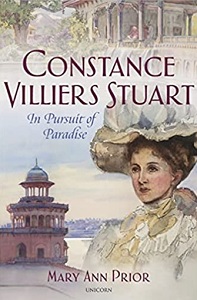
Constance Villiers Stuart (1876-1966) was an amazing woman who took advantage of her rather lofty position in life to write two impressive and widely praised books about gardens. One of them,
Gardens of the Great Mughals, is included in the Miller Library collection. In her biography of Villiers Stuart, Mary Ann Prior explains how it all came about.
Villiers Stuart was born on the edge of British aristocracy. She had an almost astonishing ability to convince people to offer her what she wanted – information about gardens, invitations to visit, connections to influential people. One small example: she persuaded the Prince of Wales to invite her to tea at Sandringham Palace, near her own estate.
More important for our purposes, she accomplished much of the thorough research for
Great Mughals and her other well-received book,
Spanish Gardens: Their History, Types and Features, by simply talking to everyone she could find who knew about those gardens and recording what they told her. She included Indian and Spanish gardeners and fellow travelers on ships and trains as well as garden experts.
She received her own education from a governess and from much foreign travel with her parents. She did not go away to finishing school, as girls of her age and class usually did. How did she learn how to do all that quality research?
A major attraction of Villiers Stuart’s books and of Prior’s book about her are her sketches and watercolor paintings. English novels of the period describe painting as a desirable attribute for young ladies. In this case the painter put her skill to good practical use. She sketched and painted the multiple gardens she visited as well as their surroundings. Last year the Garden Museum in London exhibited many of her paintings.
Constance and her husband, Patrick, left England for India in January of 1911. They spent two and a half years there, often travelling around the country as his job required. This was during the period of British imperial rule over India, with all the privileges and opportunities for British travelers that involved. Constance used those opportunities to visit many ruined gardens from the Mughal period, paint what she saw, and collect the information she needed. The Mughal Empire, which was Islamic, covered most of northern and central India and what is now Pakistan between 1526 and 1857. The gardens were fabulous. When
Great Mughals was published in 1913, it received rave reviews.
It's much fun to read how Constance managed her life – her husband, her voluminous writing for
Country Life magazine, her solo trip to Spain to research her second book. She very unusually used her opportunities to become a professional writer, not for cash, but because she wanted to. Prior shows very winningly the many reasons Constance deserves to be remembered.